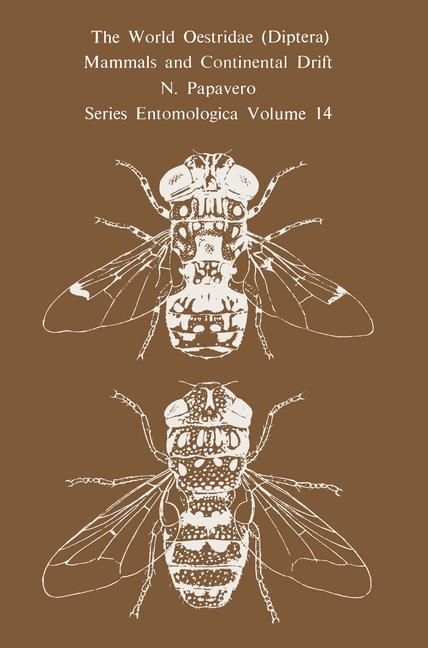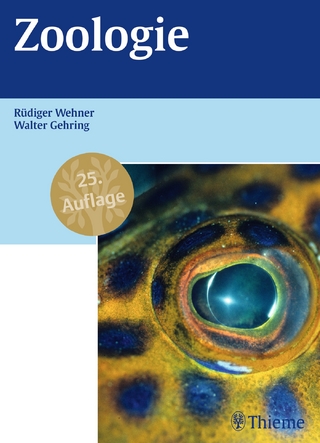
The World Oestridae (Diptera), Mammals and Continental Drift
Kluwer Academic Publishers (Verlag)
978-90-6193-123-2 (ISBN)
- Titel ist leider vergriffen;
keine Neuauflage - Artikel merken
Hypodermatidae, Rutteniidae and Cutere- bridae) -oviparous Dies; the egg is laid near the lairs of the host, on an intermediary vector, mainly haematophagous Dies (in the unique case of Dermatobia hominis), or directly on the host's skin, the egg being then adapted to adhere to the hairs; the 1st stage larva penetrates through the skin of the host, completing its development subcutaneously.
A. History, Folklore, Biology.- I. History of knowledge about Oestroidea.- 1. Antiquity and Middle Ages.- 2. From the 16th Century to the Systema Naturae (1758).- 3. From the Systema Naturae to the revision of Bau (1906).- 4. From 1908 to the classification of Townsend (1935–38).- 5. From 1947 to the present.- II. Popular knowledge about the Oestroidea.- 1. Utilization as food.- 2. Popular names.- 3. Folklore.- III. Biology of the Oestroidea—The phenomenon of aggregation.- IV. References.- B. Systematics and phylogeny of the Oestridae.- I. Key to subfamilies.- II. Subfamily Cephenemyiinae Townsend.- 1. Key to tribes.- 2. Tribe Cephenemyiini Townsend.- 3. Tribe Pharyngomyiini Townsend.- III. Subfamily Tracheomyiinae, new.- IV. Subfamily Pharyngobolinae, new.- V. Subfamily Oestrinae Leach.- 1. Key to tribes.- 2. Tribe Kirkioestrini, new.- 3. Tribe Rhinoestrini, new.- 4. Tribe Oestrini Leach.- 5. Tribe Gedoelstiini, new.- 6. Tribe Cephalopinini, new.- VI. Phylogeny of the Oestridae.- 1. Morphological trends of the Oestridae.- 2. Phylogeny of the subfamilies.- 3. Phylogeny of the Cephenemyiinae.- 4. Phylogeny of the Oestrinae.- VII. Bibliography of Oestridae.- C. Characteristics of the hosts of Oestridae.- I. List of present hosts.- 1. Marsupialia.- 2. Proboscidea.- 3. Artiodactyla.- 4. Perissodactyla.- 5. Common names of the hosts.- II. General considerations about the hosts.- 1. Marsupialia.- 1.1. Generalities.- 1.2. Palaeontological history.- 1.3. Hypotheses on the origin of Australian marsupials.- 1.4. Characteristics of Australian marsupials.- 1.5. Characteristics of a marsupial host.- 1.6. Implications in the case of the Eutheria.- 2. Proboscidea.- 3. Artiodactyla.- 3.1. Classification.- 3.2. Suborder Palaeodonta.- 3.3. Suborder Suina.- 3.4. Suborder Ruminantia.- 4. Perissodactyla.- 4.1. Suborder Ceratomorpha.- 4.2. Suborder Ancylopoda.- 4.3. Suborder Hippomorpha.- III. References.- D. Hypothetical history of Oestridae evolution.- I. Origin and diversification of the family.- 1. Evidence obtained from the Tracheomyiinae.- 2. Diversification of the family.- 3. The Mesozoic hosts of Oestridae.- II. The problem of the present absence of Oestridae in South America.- III. The problem of the presence of Oestridae in Australia.- IV. Evolution in Africa.- 1. The early hosts of African Oestridae.- 2. Diversification of the African Oestridae.- V. Evolution in Eurasia and North America.- VI. References.- Abstract.
| Erscheint lt. Verlag | 31.8.1977 |
|---|---|
| Reihe/Serie | Series Entomologica ; 14 |
| Zusatzinfo | 248 p. |
| Verlagsort | Dordrecht |
| Sprache | englisch |
| Gewicht | 649 g |
| Themenwelt | Naturwissenschaften ► Biologie ► Zoologie |
| ISBN-10 | 90-6193-123-1 / 9061931231 |
| ISBN-13 | 978-90-6193-123-2 / 9789061931232 |
| Zustand | Neuware |
| Haben Sie eine Frage zum Produkt? |
aus dem Bereich


